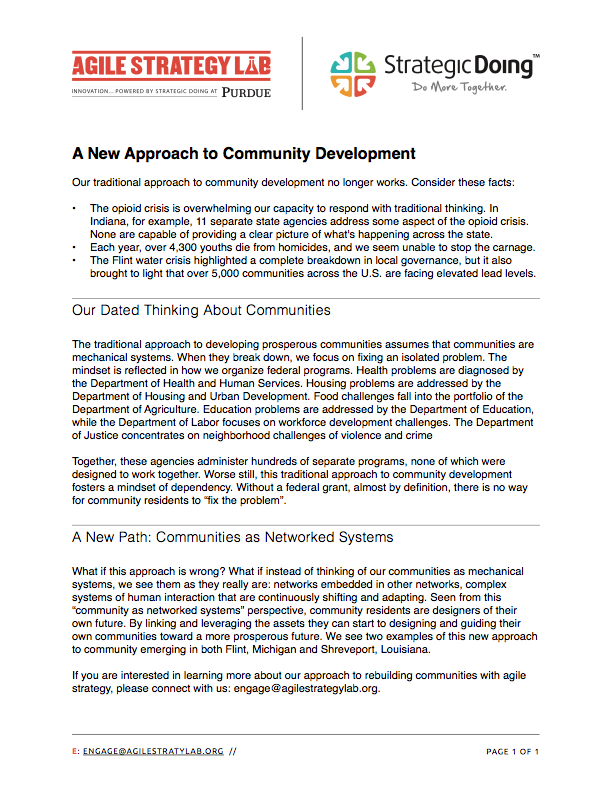Redefining Community Development in the Age of Networks
The traditional approach to developing prosperous communities assumes that communities are mechanical systems. When they fail, when there is a breakdown, we must have a problem that needs to be fixed.
What if this approach is wrong?
What if instead of thinking of our communities as mechanical systems, we see them as they really are: networks embedded in other networks, complex systems of human interaction that are continuously shifting and adapting. What if communities resembled the murmuration of starlings?
Murmuration from Islands & Rivers on Vimeo.
Seen from this “community as networked systems” perspective, community residents are designers of their own future. They move their communities to the next level by linking and leveraging the assets embedded in their personal networks.
The Lab is currently working on this approach in a number of testbeds:
- Flint, Michigan
- Shreveport, Louisiana
- Granite City, Illinois
Strategic Doing practitioners, led by Bob Brown at Michigan State University and Kim Mitchell at Community Renewal International have begun to chart out the implications of this new perspective.
We need to design new policies at the local, state and federal level that encourage the formation of these networks. Linking and leveraging replaces command-and-control. Horizontal thinking replaces vertical thinking. Government becomes a key investor in these networks. Experimentation and learning by doing replaces the relentless chase for grants.
The Lab is supporting this work, because we believe we need to design a new generation of public policies to support community development in both rural and urban communities.


The Founder of the Lab at UNA and co-author of Strategic Doing: 10 Skills for Agile Leadership, Ed’s work has focused on developing new models of strategy specifically designed to accelerate complex collaboration in networks and open innovation. He is the original developer of Strategic Doing.
